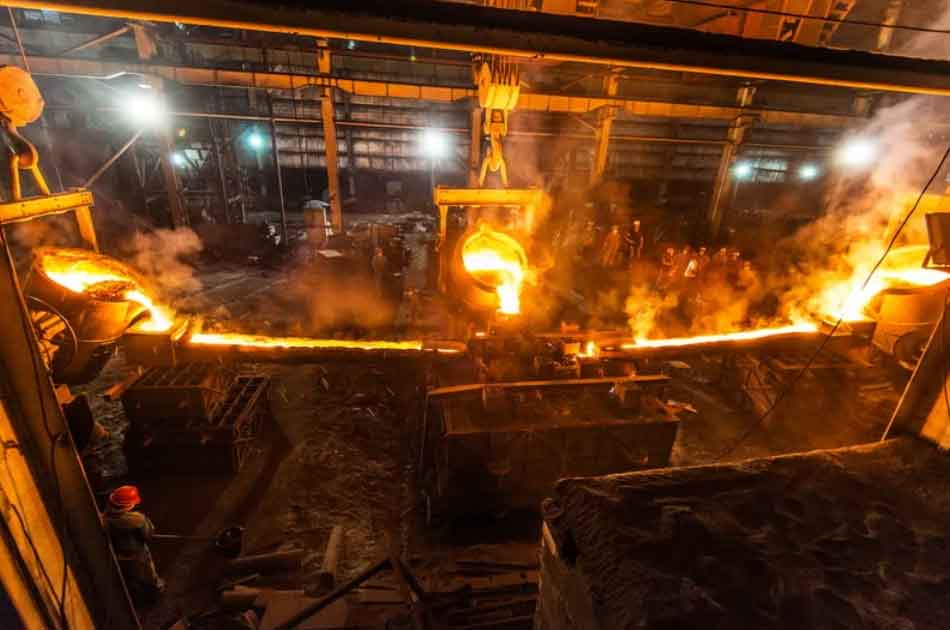China has also carried out numerical simulation of casting solidification since 1978. Although it started late, it has also developed rapidly. Firstly, many colleges and universities and professional research institutes have carried out extensive basic research on Numerical Simulation of casting solidification. Representative in this regard are Dalian University of technology, Shenyang Foundry Research Institute, Northwest University of technology, Xi’an Jiaotong University, Chongqing University, Harbin University of technology, Tsinghua University, Shenyang University of technology, Harbin University of science and technology, Inner Mongolia Institute of technology, Hefei University of technology, Beijing University of science and technology, etc.
Since the 1990s, computer technology has developed rapidly and brought new prospects to the development of numerical simulation technology. Due to the relative maturity of temperature field and flow field calculation in numerical simulation technology and the demand of industrialization, countries all over the world have successfully developed a series of numerical simulation software for casting. These software are used to analyze casting defects and predict casting quality, It plays an important role in optimizing the casting process. During this period, the focus of research has also changed in the research of numerical simulation technology.
Firstly, in terms of temperature field, the research mainly focuses on further improving the accuracy and efficiency of temperature field simulation calculation, especially the fast and accurate calculation of temperature field of super large castings. Dong Huaiyu of Tsinghua University studied the calculation step, proposed the concept of time span of casting unit from liquidus to solidus during solidification, and established the time step optimization model. Secondly, the development of the flow field, including the calculation of the forward flow field, the calculation of the depth of the field and other aspects of the flow field. For example, Taiwan, China wenruizhe introduced the developed computer simulation system for centrifugal casting filling process, and Japan kashiwai Shigeo conducted numerical simulation for vacuum suction casting filling process. In terms of multiphase field, due to the difficulty of multiphase flow simulation, most commercial casting simulation software do not have the ability of multiphase flow simulation. Complex multiphase flow means that some key problems must be considered, such as turbulent flow, surface tension, heat conduction and phase transition. In order to accurately simulate multiphase fluid, these key problems must be handled properly at the same time. China chenliliang et al. Carried out simulation research on complex multiphase flow in casting process, Korean scholars also carried out multiphase simulation of high-pressure die casting process, Taiwan, China et al. Developed a technology for gas and liquid two-phase flow analysis, and Japan developed a mold filling simulation algorithm with surface tension based on high-precision algorithm. Thirdly, microstructure simulation and mechanical property prediction during casting solidification have become a new hotspot in the field of casting numerical simulation. The main research results in this field are as follows: Li Dianzhong of Shenyang foundry takes high temperature nickel base alloy as the research object and uses probability method to simulate the three-dimensional microstructure growth process. Jin Junze of Dalian University of technology established a macro and micro coupling model to describe the formation process of metal solidification structure, and achieved gratifying results in simulating the formation of solidification structure of solid solution alloy. Guo Dayong of China Institute of metals and others simulated the dendrite growth of multicomponent alloy melt by cellular automata method with macroscopic calculation instantaneous transmission equation. Wu menghuai of the University of Austria used Euler multiphase method to simulate the phenomenon of phase separation in solidification. In order to study the phenomenon of phase separation in solidification, an Eulerian multiphase model based on volume average was developed. Liu chengmu of Korea production technology research institute predicted the microstructure and mechanical properties of ductile iron castings. The mechanical properties of casting alloy mainly depend on the matrix structure as cast and heat treated, and the spheroidization rate of graphite phase in ductile iron also has a great influence on the mechanical properties. In addition, foundry workers in Japan, South Korea, Sweden, Belgium, India, China and other countries have made meaningful research results on the formation and transformation process of microstructure based on aluminum alloy, superalloy and nodular iron.
From the above analysis, it can be seen that the development direction of numerical simulation technology in the future, both at home and abroad, is that the temperature field and flow field will develop deeper and wider, and the special castings such as super large castings or thin-wall complex castings can be calculated quickly and accurately; Be able to find more accurate defect prediction methods; The simulation scale will move from macro to micro, and gradually mature, involving crystal nucleation and growth, dendrite and columnar crystal transformation to metal matrix control, so as to achieve the ultimate purpose of numerical simulation and accurate quality control of castings; The simulation process will be able to consider the overall optimization design of multi physical field and multi-scale simulation.

